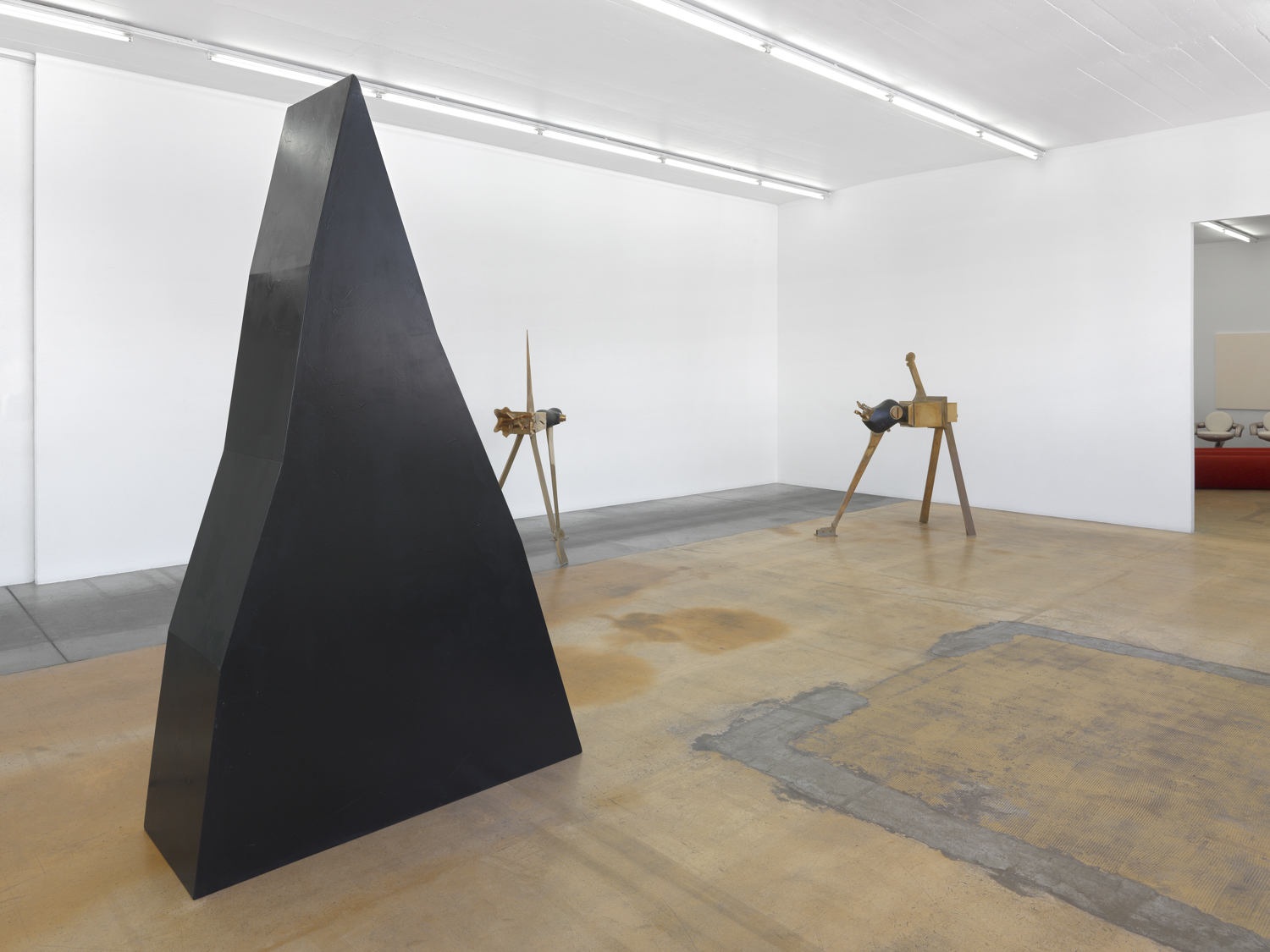This focused display of Lebanese-Italian-American artist Douglas Abdell (born 1947) brought together three different series of his work—which spans painting, drawing, tapestry, and sculpture: the Yads and Aekyadic sculptures (1970s–present), and the Phoneas paintings (1980s).
Abdell came to prominence in the New York art scene of the late 1970s, during the heady period which also saw the emergence of Street art, block-parties, and the hip-hop scene. He became a hot name in the New York city art galleries (Crispo, Graham, Gallozi-La Placa…), working from Minimalist sculptures to graffiti-inspired paintings, “totems,” and collages of urban cultures.
His story crosses that of New York Mew Expressionism and Minimalism, the “Trans-avant-guardia” movement as developed by curator Achille Bonito Oliva, and Latin and Afro-American cosmopolitan cultural influences—not to speak of his Lebanese roots and knowledge of Phoenician history and archaeology.
In the 1970s, Abdell invented his concept of “Aekyad,” a series of combinatory and rhizomic forms, cast in bronze and patinated in black, including on a large scale, installed in American public and museum parks. Until today, he continues to imagine and design new variations, on a daily basis, rather than building them on a large scale, using arithmetic pencil drawing and scale model.
While the Aekyadic sculptures seem at first sheer abstract and plain volume they still share a common root with the alphabetic (or shall we say anagrammatic) Phoneas paintings which in return take their minimalistic form and bold energy from the sculptures “heavy metal” pulsations. Abdell’s general approach to sculpture is to look at it as the materialization in space of a sound or phoneme that propagates into the third dimension. Both the Aekyadic and Phoneas works anticipate somehow Abdell’s further exploration (in the 1980–1990s) of his abiding fascination with the origins and reinvention of written and spoken language throughout the Mediterranean.
From the 1990s, Abdell chose to relocate from NYC to Spain, first in Madrid and later on to Malaga, to explore his Mediterranean-Lebanese roots and create a Phoenician archaeological fantasy-in-stone, reincarnating Hannibal the Carthaginian commander who fought the Romans (3rd century BC) for his “Fourth Punic War.”
This new presentation of pieces which remained unseen for 40 years shed new light on a compelling and unexpected artist who, in spite of his choice to become overshadowed through time, remained active to his practice and commitments until now.
- Curated by Paul Bernard
